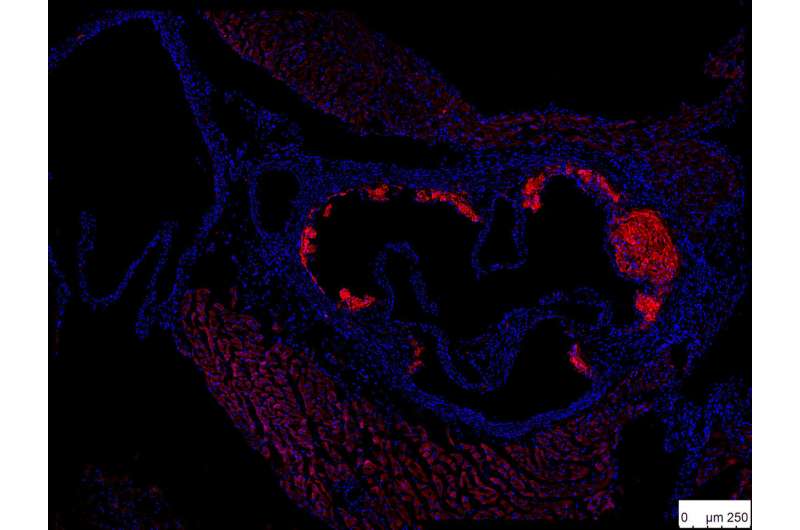Protective mechanism against atherosclerosis discovered

Immune cells promoting inflammation play a crucial role in the development of atherosclerosis. Scientists at CeMM and the Medical University of Vienna in collaboration with the University of Cambridge showed that a survival factor for those cells also has anti-inflammatory functions and a protective role in atherosclerosis. The study, published in Circulation, provides valuable new insight for atherosclerosis research and suggests a hitherto unknown, inherited risk factor for atherosclerosis.
Atherosclerosis, the pathological narrowing of blood vessels, is the underlying cause for the majority of strokes and heart attacks, the major causes of mortality worldwide, according to the WHO. For the development of atherosclerosis, a special type of white blood cells called B2 lymphocytes are believed to play a crucial role. For their survival, they need the molecule BAFF. It has been shown that deletion or blockade of the BAFF receptors at the surface of B2 lymphocytes reduces the development of atherosclerosis in mice. Hence, a similar effect was expected when BAFF is directly targeted.
With highly specific antibodies, BAFF can be bound and neutralized. Those antibodies were tested for their effects on the development of atherosclerosis in mice by scientists from CeMM Research Center for Molecular Medicine of the Austrian Academy of Sciences and the Medical University of Vienna in collaboration with the University of Cambridge. The results were surprising: Instead of reducing atherosclerotic lesion formation in the arteries of the tested mice, the antibody treatment lead to an increased plaque size. The findings were published in Circulation.
"We were able to show that B2 lymphocytes were efficiently depleted upon anti-BAFF antibody treatment," says senior author of the study Christoph Binder, CeMM Principal Investigator and Professor for Atherosclerosis Research at the Medical University of Vienna. "Surprisingly, the plaque size increased, indicating a hitherto unknown role of the BAFF molecule in atherosclerosis. However, in further experiments, we were able to explain these findings."
The researchers found BAFF to have anti-inflammatory properties, which has a positive effect on plaque size and atherosclerosis risk. The newly discovered mechanism is triggered by an alternative BAFF receptor (TACI) on the surface of macrophages, another type of immune cells. It was shown that these cells induce an anti-inflammatory process. This finding may provide important implications for atherosclerosis research and prevention: For example, mutations in the gene for TACI may confer an increased cardiovascular risk.
More information: Dimitrios Tsiantoulas et al, BAFF Neutralization Aggravates Atherosclerosis, Circulation (2018). DOI: 10.1161/CIRCULATIONAHA.117.032790



















